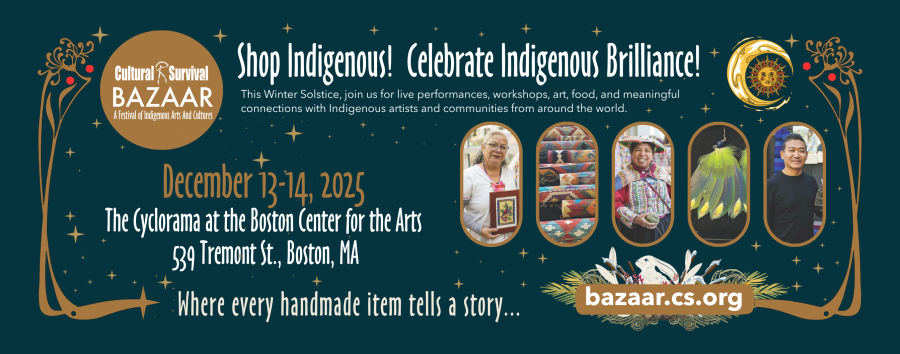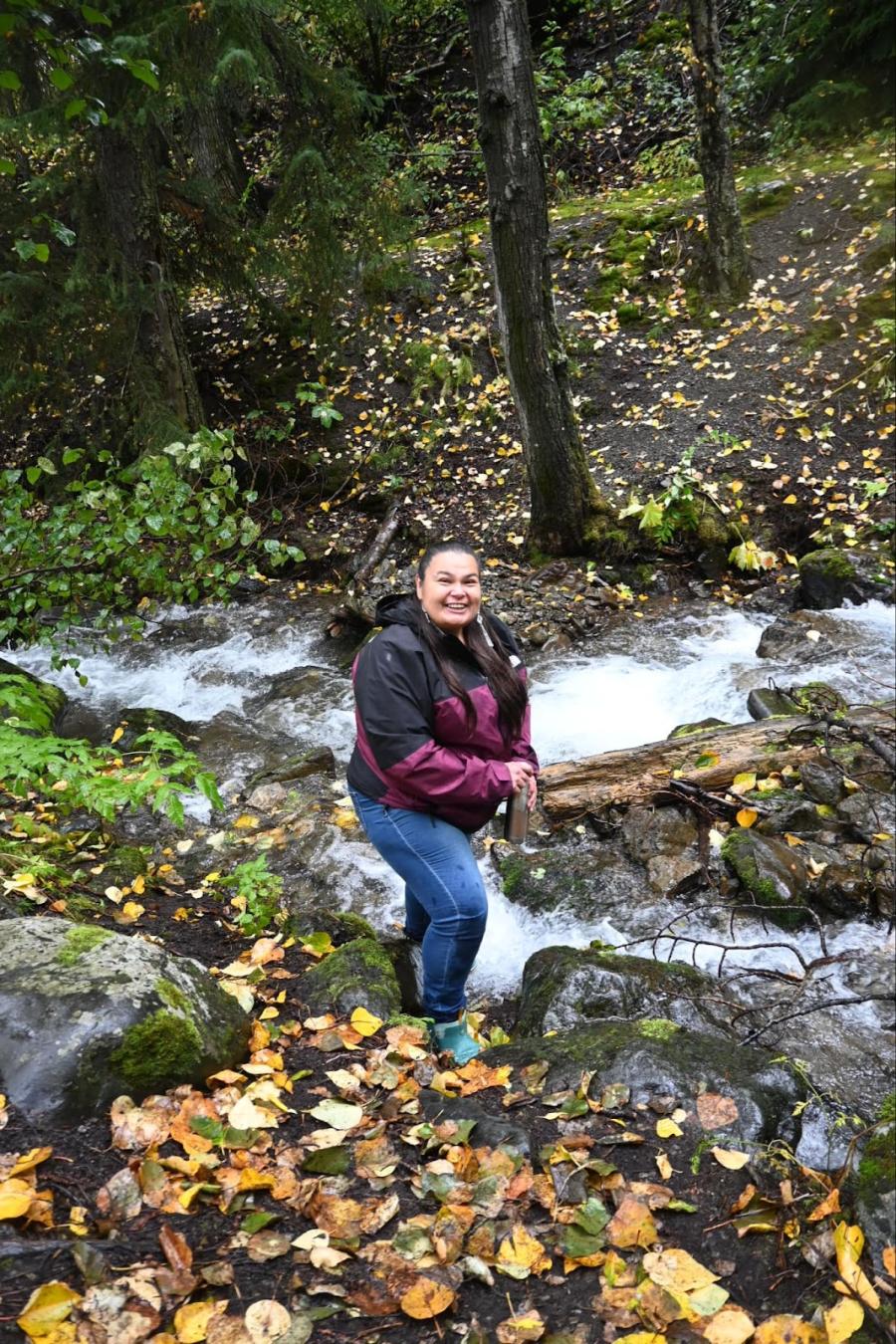Walking Thunder is a Diné medicine woman. She recently gave a talk at the Ringing Rocks Foundation about her people’s spiritual traditions and particularly about sand painting as a healing tool. The article that follows was adapted from that talk.
First I want to tell you about the colors, about the sand in sand paintings and what it symbolizes. Long ago, sand was a messenger when there was a war between two tribes. The sand painting was our messenger, and each color symbolized certain things. It was a healing symbol when one of the Diné was captured and was to be killed. He put a sand painting healing on himself, and that night he prayed and did a lot of chanting while he was sitting on the sand painting. And the next day he was just released.
The rust colored sand, the red color, talks about your inner feeling, how you feel about things. When you go to Red Mesa, I suggest you yell as hard as you can, to release your stress. This is where we release our stress, release our thoughts. A lot of times you can talk too much or make people uncomfortable, and so the best thing to do is to release everything and talk to Mother Earth at that Red Mesa place.
The white sand talks about being positive. Being positive works from the east to the west. You keep going, you do not look at the problem that you had. Even if you lose somebody, you always have to think positively. The world is not going to stop for you, the water is not going to stop running for you. You have to face the reality that it happened; you have to get your right foot and left foot going again.
The green color is used in traditional healing, and only a little bit of sand costs a lot to a medicine person. I know where the green sand is, and I take my own green sand. When you go out there, you break a plant, and rub it together and throw it over your head.
The black sand talks about teaching. When I was learning how to become a medicine woman, I had a teacher. He was called The One Who Walked Away. He was called that because when people came for his help, if he sensed that the person was not really serious he would get out and walk. My teacher was a stubborn man, an honest man, and a happy man. My teacher told me a lot of things: this is how you do it, this is how you put pollen on the herbs, and this is how you get it. He would tell me only one time of the year. Then a full year would pass, and that’s when he would tell me about it again.
The pink sand is about the young ones. We learn from the young ones. When we look at a young one, we see how they act, what kind of conversations they have, how they feel about certain things, and we learn from them. This is how you can communicate with your teenager, by listening to them. I know, I have nine children and fourteen grandkids, and I still have problems hearing their advice.
The brownish/reddish color is being who you are, being yourself. Being yourself means never being ashamed of how you look, of where you come from, never being ashamed of where you live. My grandpa used to say that, “If you’re ashamed of who you are, then it’s going to hit you; it’s going to hurt you.” I’ve seen some of those things myself, so being who you are is essential for your life.
I like the turquoise color; I’m crazy about it. Turquoise symbolizes the beauty in the person. Every day you get out of bed and say you’re a beautiful person. Every day you want to get out of bed and say you’ve accomplished things. I say that everyone is beautiful, and that’s turquoise. Anyone who wears turquoise, even a ring, that’s a beautiful thing.
The gold color talks about respect. Respect is knowing yourself first, before you can respect the next person. A lot of times I look in the mirror and I talk to myself, and my grandkids will look up at me and ask, “Grandma, are you crazy?” I say I’m trying to do something here, and they do the same thing. To respect yourself you have to understand your heartbeat; you have to know your footstep. You have to know lot of things in your body, from your feet up to your head, to know who you are. Know when you make mistakes, know right from wrong. Know about yourself first, before you can criticize the next person. A lot of people judge others, but you can’t do that. You have to live the life they’ve lived, the way they did. This is why respect goes in there.
Turquoise and black talk about the teaching of beauty. Teaching of beauty is when you learn about your creation on Mother Earth and Father Sky. You learn about your healing, you learn about a lot of things, you are curious. You ask questions.
Mother Earth has many colors. Sometimes we mix the colors together, but none of these sands are dyed; they are all from Mother Earth. Before I go out to get materials for healing I give the four sacred stones to Mother Earth and tell her I’m taking from her for a particular reason. We don’t just take, even with food. We don’t just take with medicine, because medicine is very important. We give her pollen. I see some people mix a lot of medicine, but the way I was taught was that you just take the medicine that you need to do a particular ceremony. That’s the most holy. You cannot make too much medicine and let it sit there, only take what you need. When I want to deal with my patient, I go out and get my own medicine.
The healing ceremony by sand painting is just between your patient and you and is very private. I keep it very confidential, whatever goes on. I won’t even tell my kids what I did there. It’s none of their business; it stays here. You have about 600 or 700 ways of healing your body with sand painting, from your feet on up to your head. There are all different kinds of sand painting, and all kinds of ways to happiness, to marriage, to coming of age. In our culture, we just deal with Mother Earth and creation. That’s it. We live on Mother Earth, we have oxygen in between, and we live under Father Sky. We don’t deal with who’s going to go to heaven and who is going to go to Hell. We deal with the circle of life.
When I’m doing a healing ceremony, it’s very traditional and very sacred. I block everything out, and just go with my patient. I cry with him, laugh with him, whatever comes along. You have to understand what’s wrong with that patient. Sometimes you need to use herbs; sometimes you need to use sand-painting healing. Sometimes it’s just in the mind; sometimes you need a white prayer. I pray about it before I see my patient. When you are going to help a patient, you have to pray about it.
I learn from older people. I used to follow them around all over, and my sister used to tease me about following an old man, saying, “Don’t you ever get tired of following an old man?” What she didn’t realize is that they have a lot of teaching in them. By becoming a medicine person, I asked a lot of questions, I followed a lot of people, even though they were herding sheep. I would herd sheep myself.
My grandfather used to say, “When people have long hair, it brings the rain and it grows things.” Today everyone has their hair short, and look at how the weather is. Flowers don’t bloom anymore. Sometimes I think I’m one of the people that brought nature in the wrong direction.
There are a lot of things in the sand painting that teach you. One of the things is that you have to have courage, to do things, to step forward. I tell my kids, “Don’t say you can’t. I hate that word. I don’t know why they came up with that word, but ‘can’t’ is not to be used in this house.”
On a sand painting a crisscross pattern signifies that you bless yourself from the feet on up, and you share. That is why you see people in the painting holding their hands out. There are three ways in our tradition: east, south, and west. We don’t deal with the north unless we have to. The east side of the mound in a painting represents positive things. The south side represents beauty. The west side is channel changing. The north side is liberated things. Sometimes I go that way, but then I wake up again. In traditional ways, we don’t deal with the north side; we take evil away to the north side.
The center is your center life, and that is where the sand painting is crisscrossed. That’s where your belly cord is. The two lines represent the female and male creation. Then there is a thing that we call a she-man. That’s the one thing that knows about men’s work and ladies’ work. That is the most sacred thing within our ways: the in-between. A long time ago men and women were spread apart, and the she-man was in the middle to put them back together. So it’s like putting Mother Earth and Father Sky back together. Some people get disgusted just looking at that person. I tell you the she-man the holiest thing you could see.



